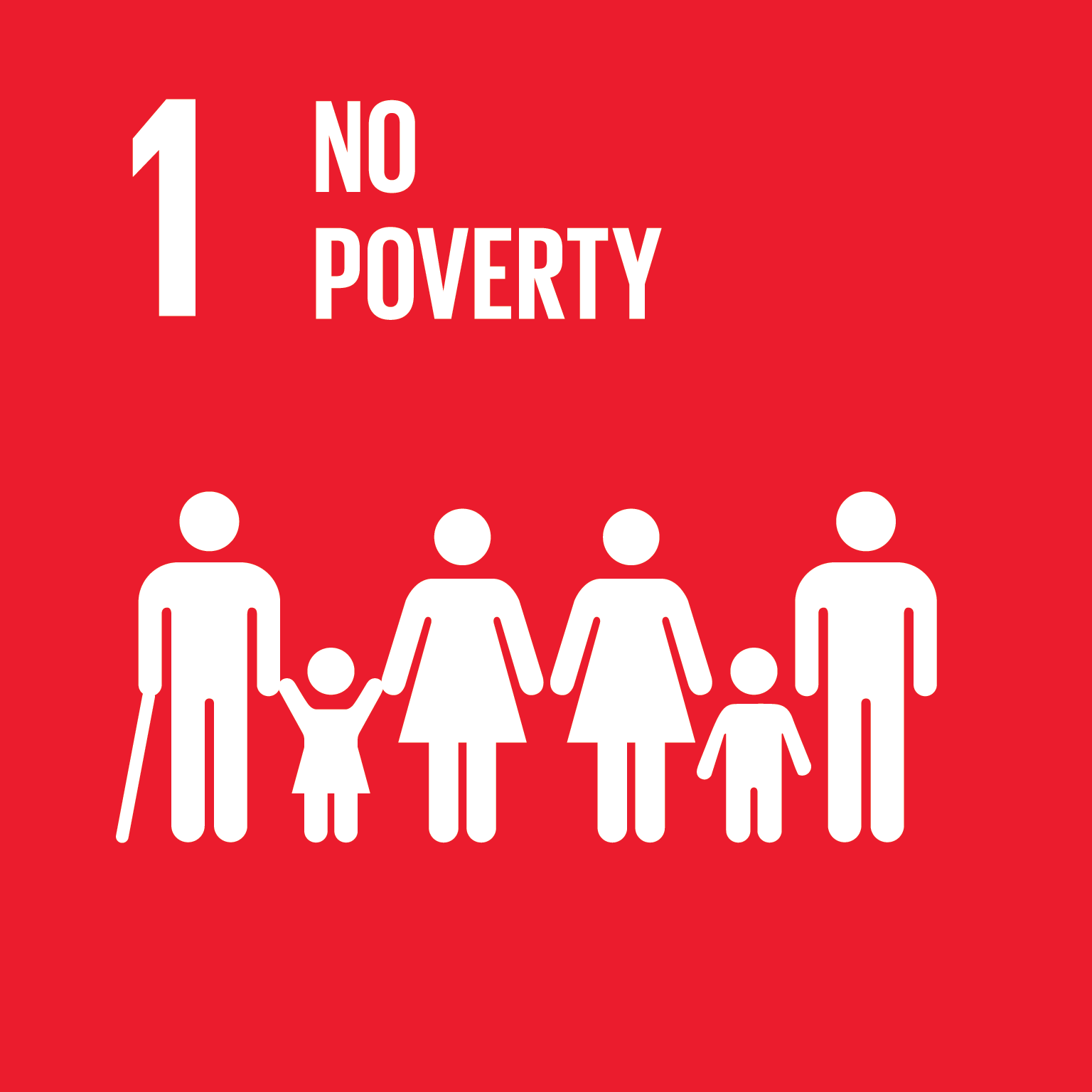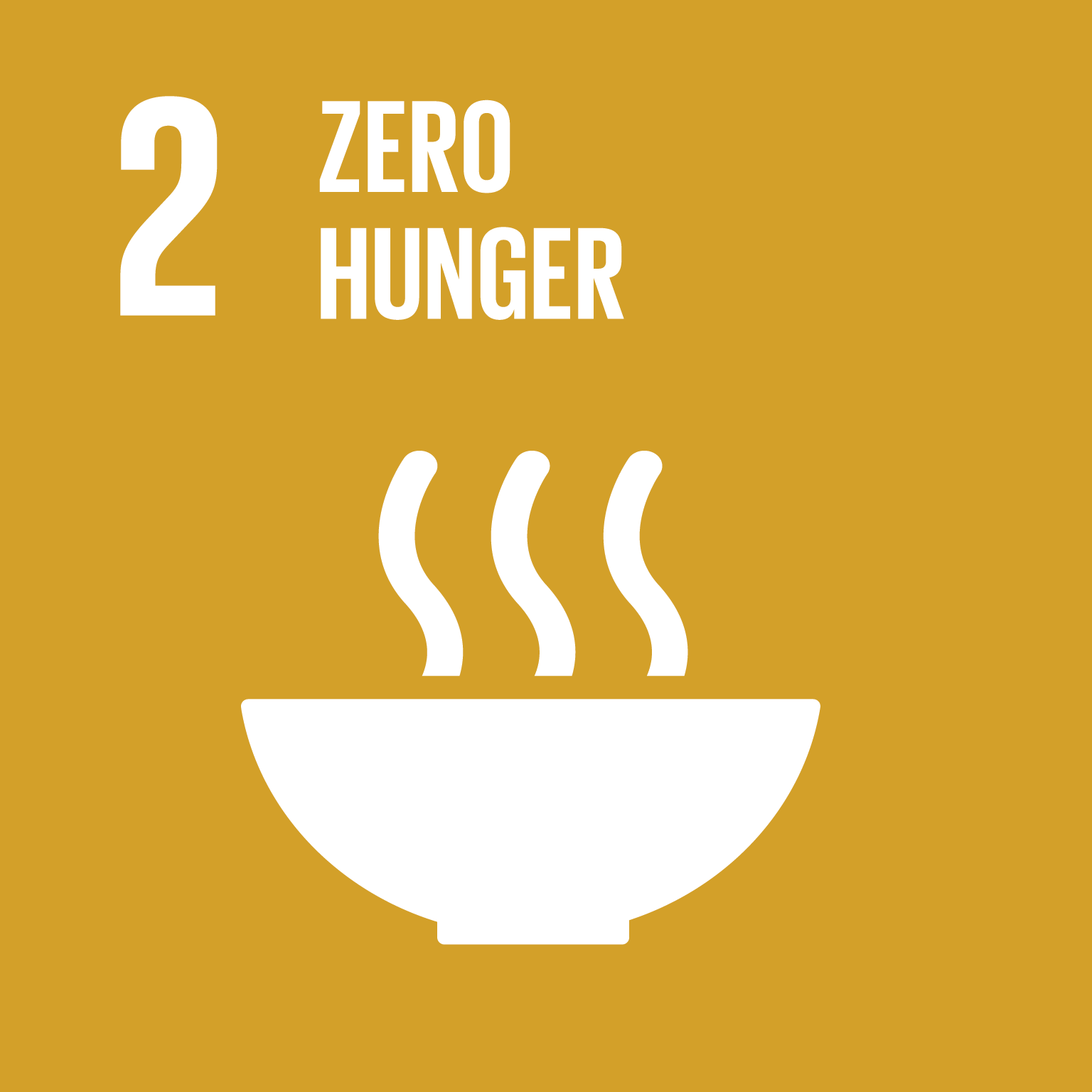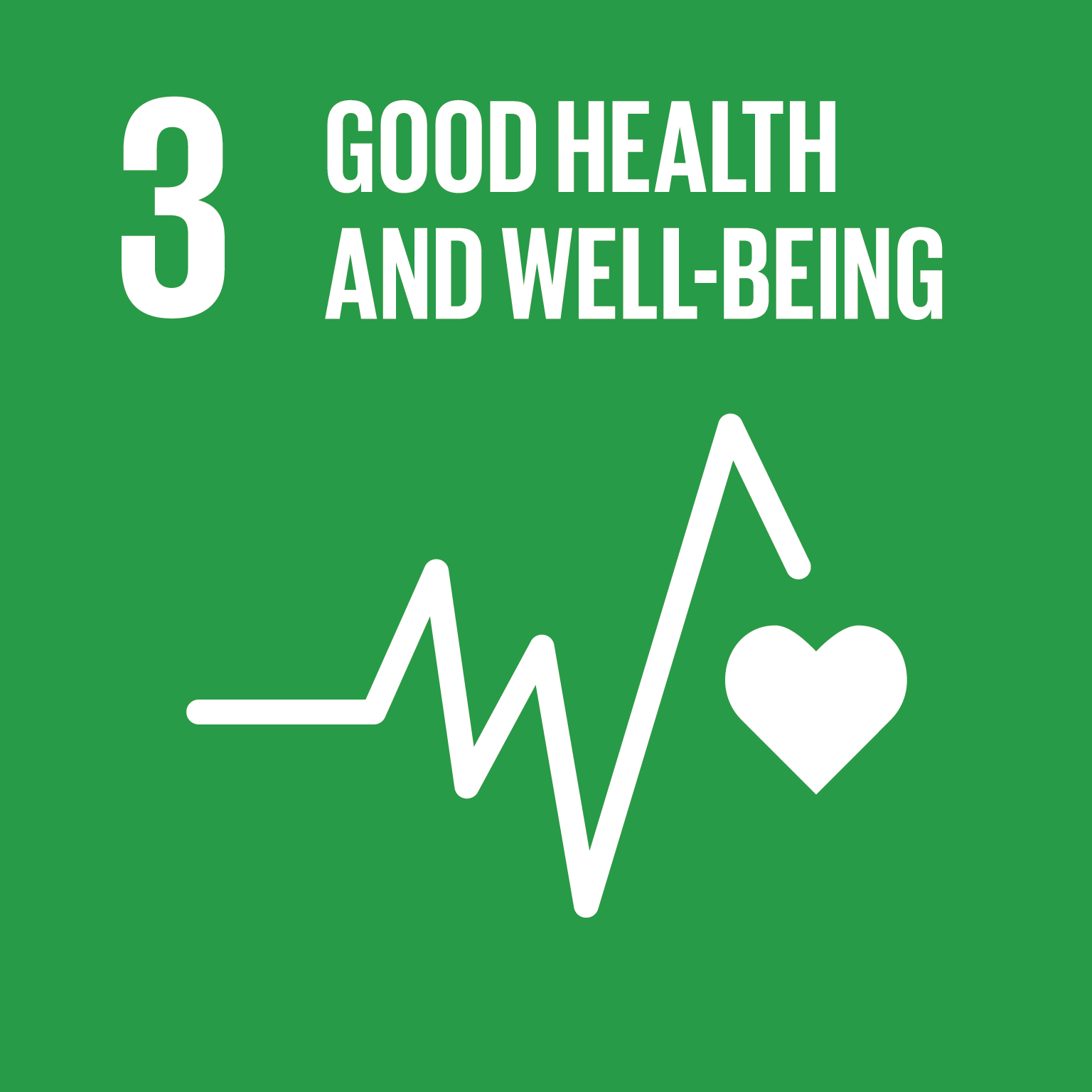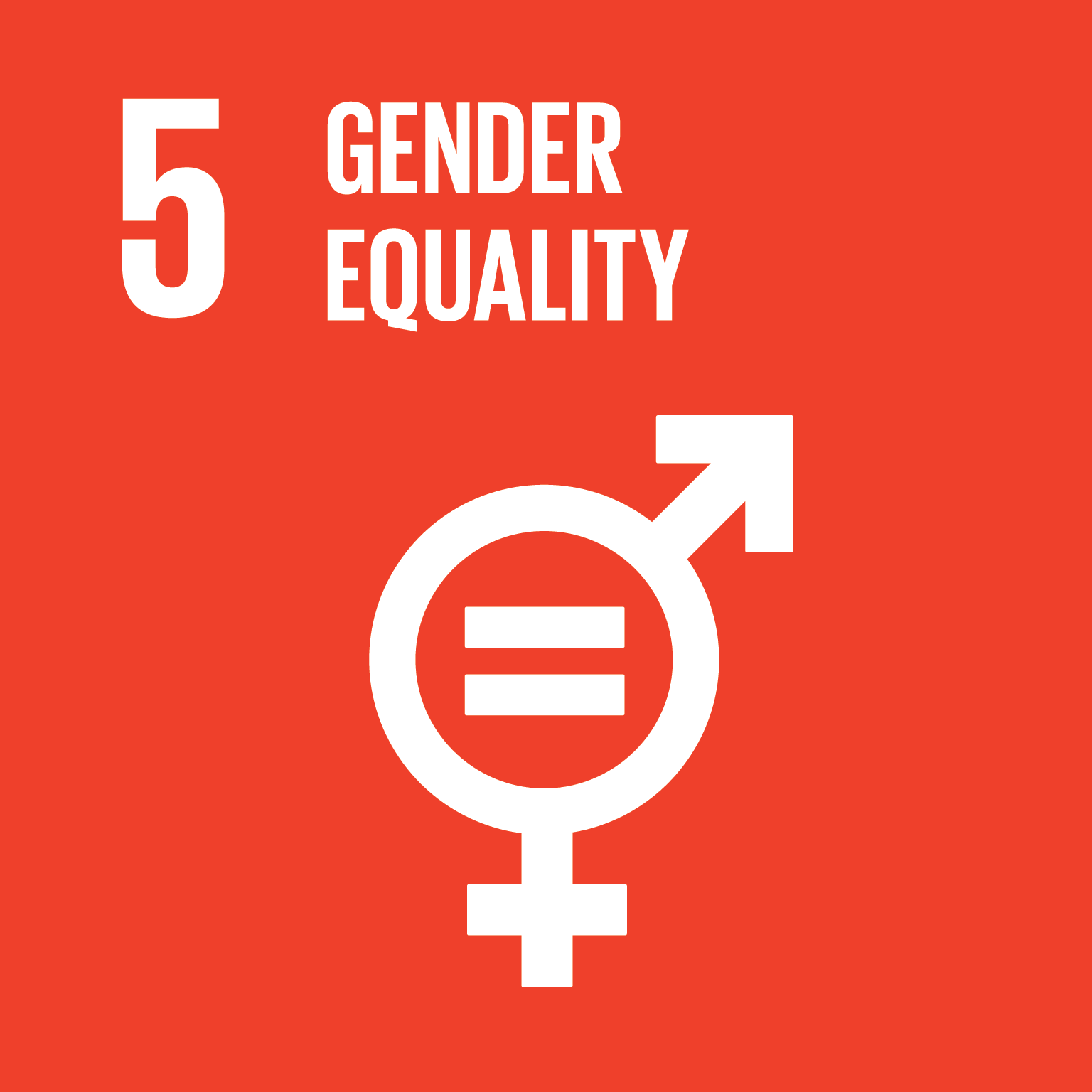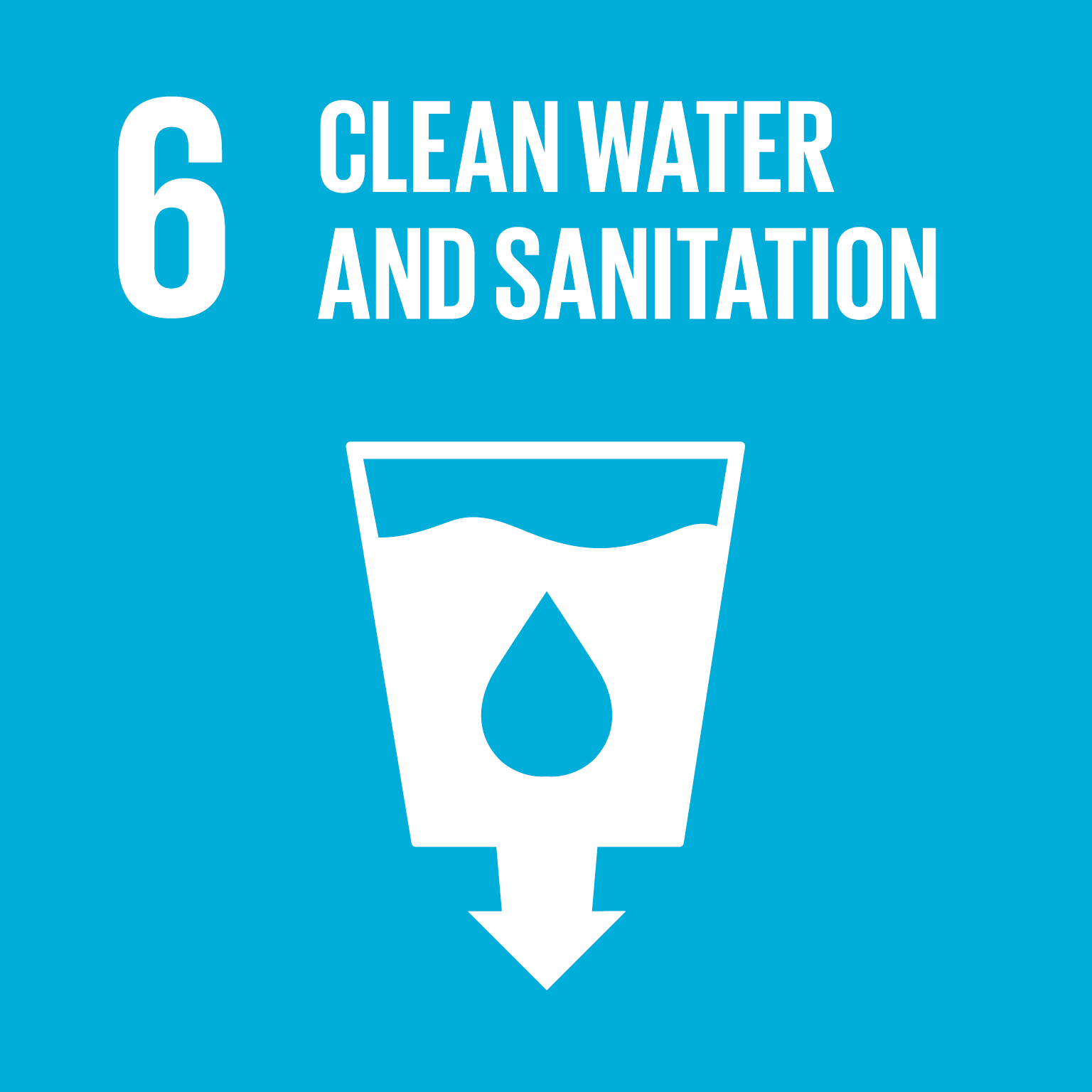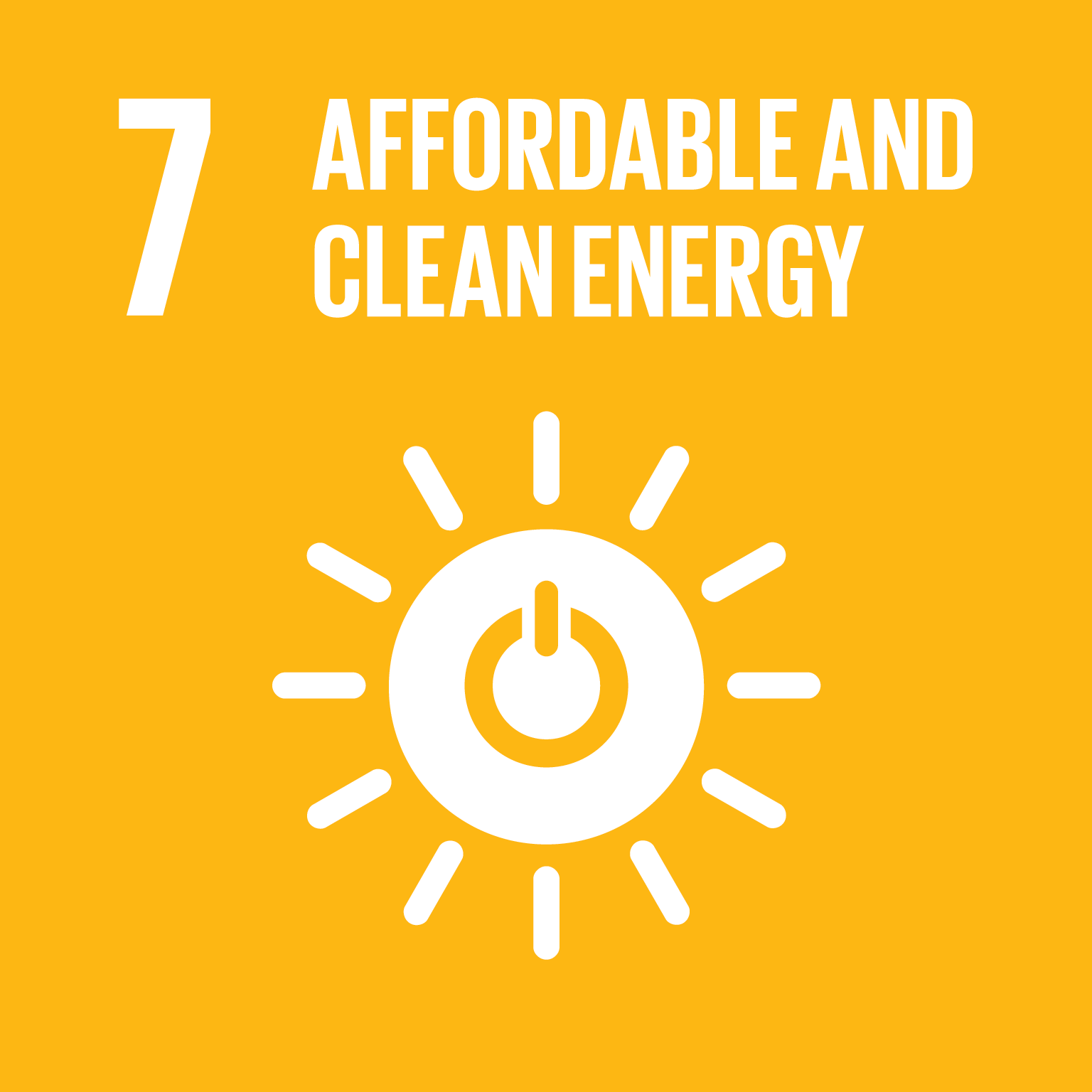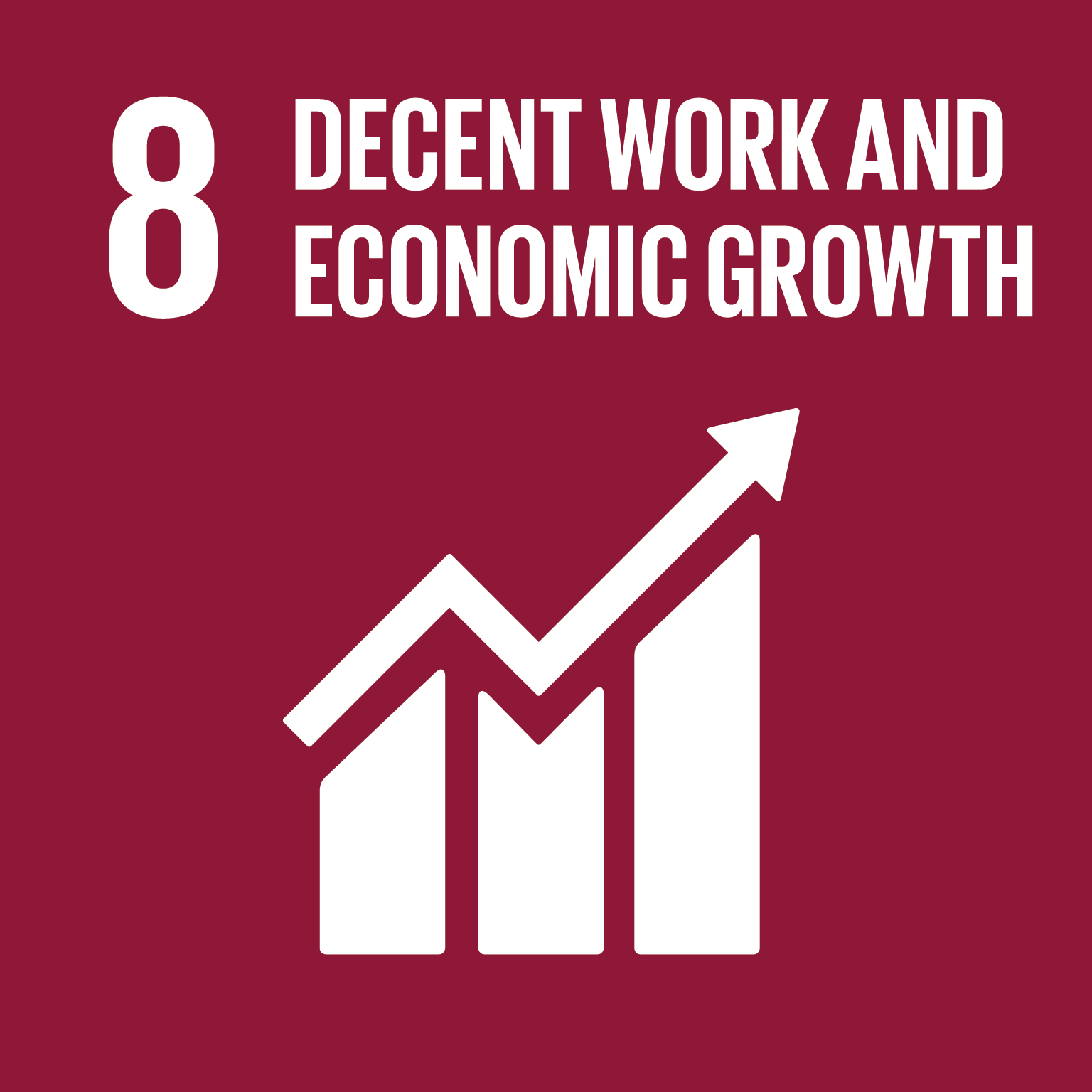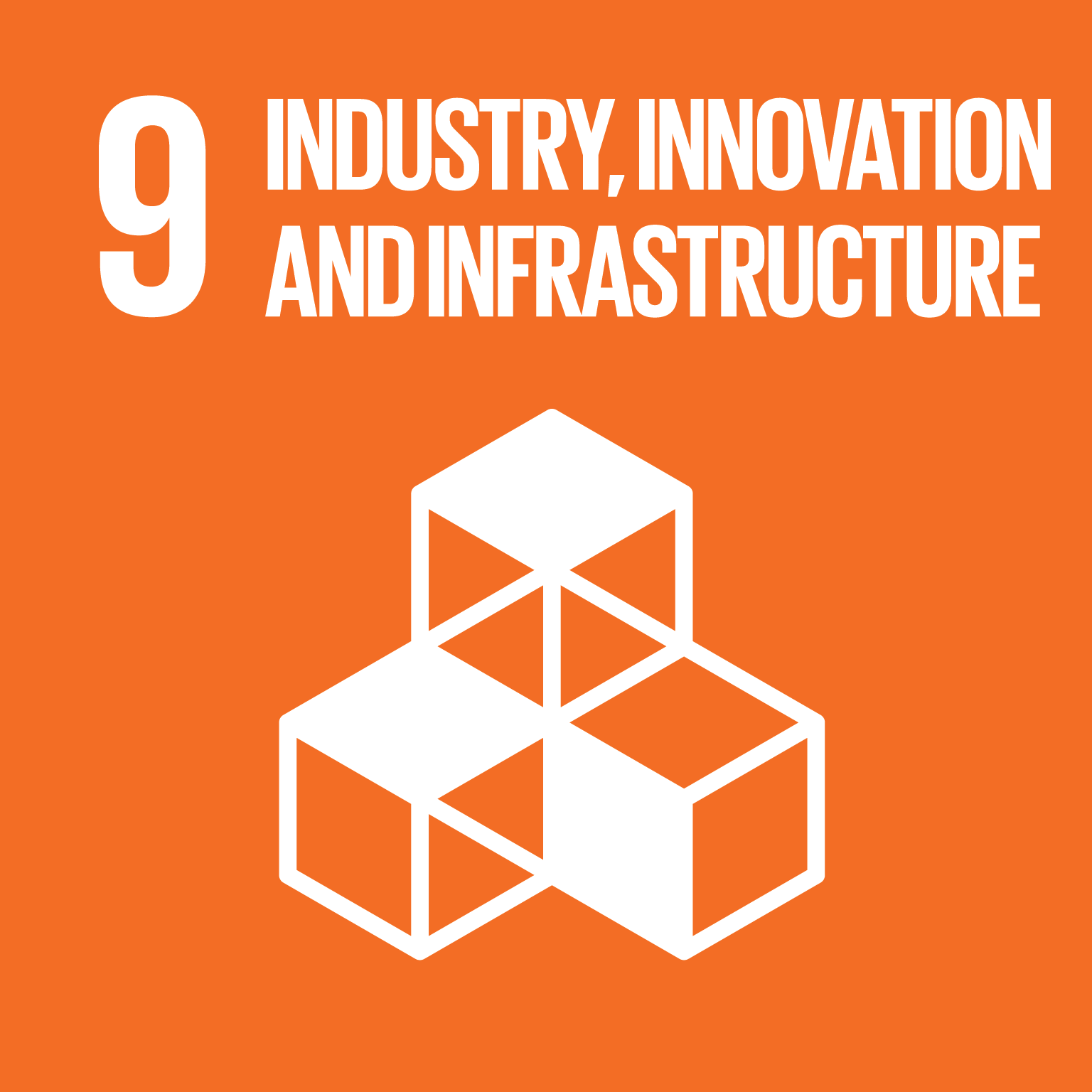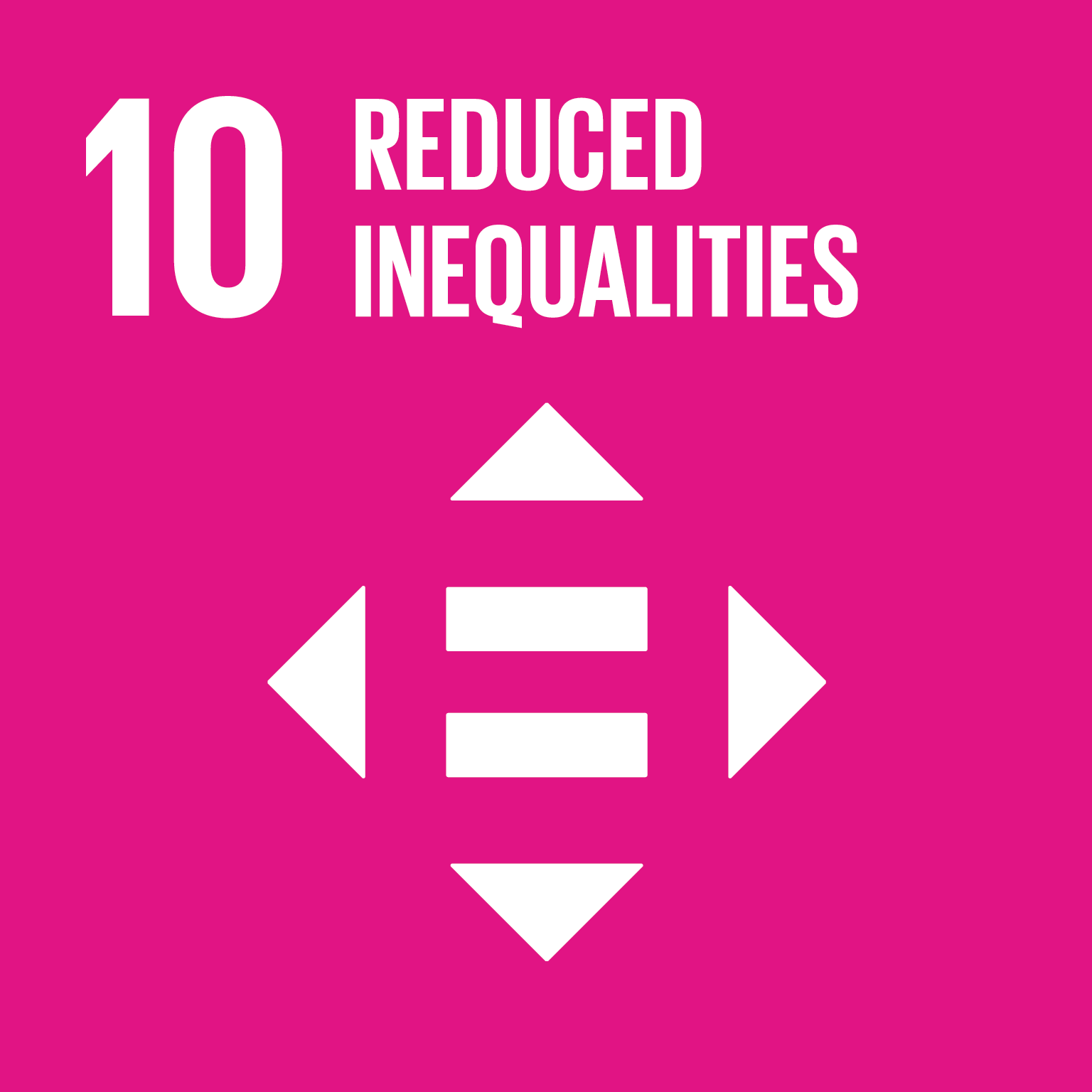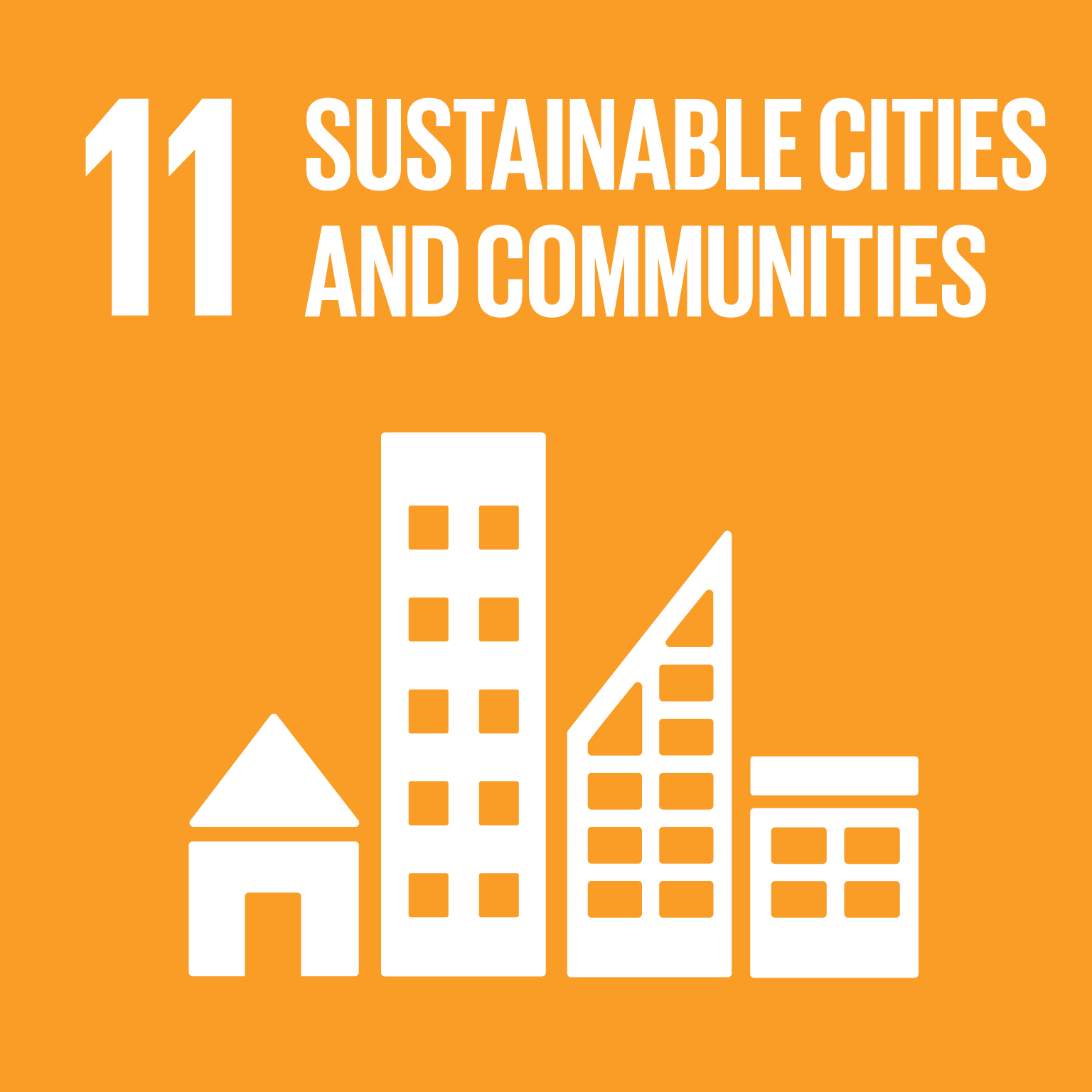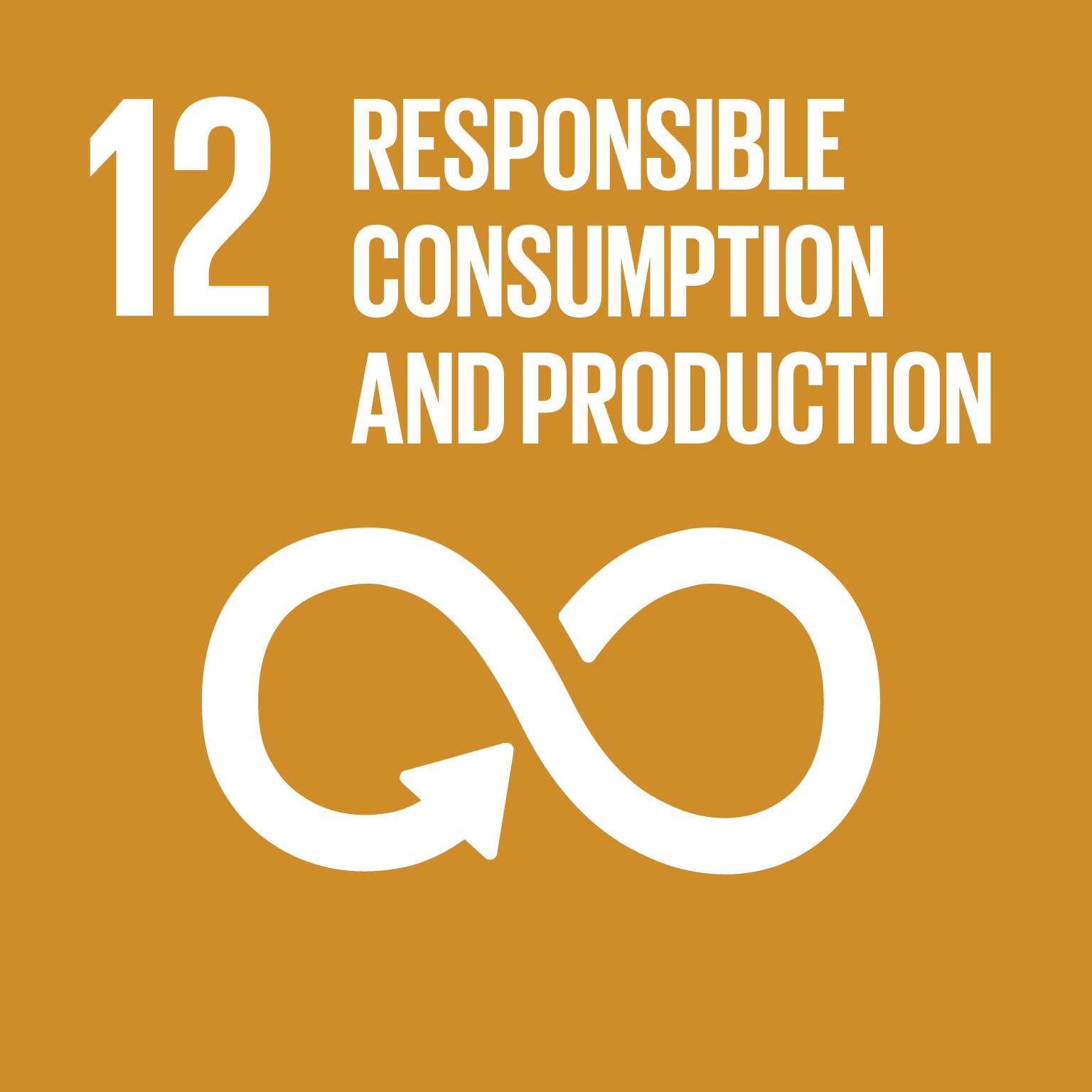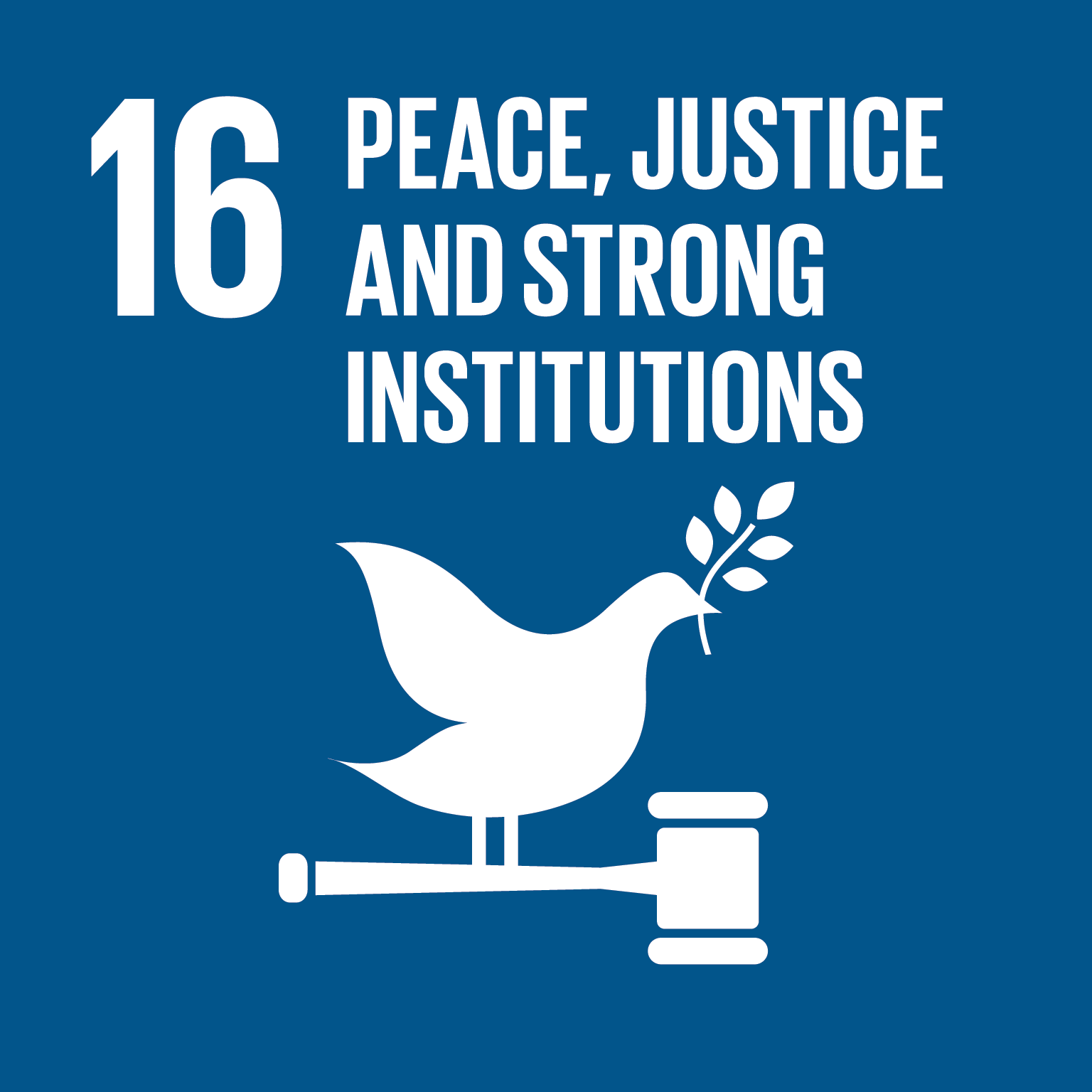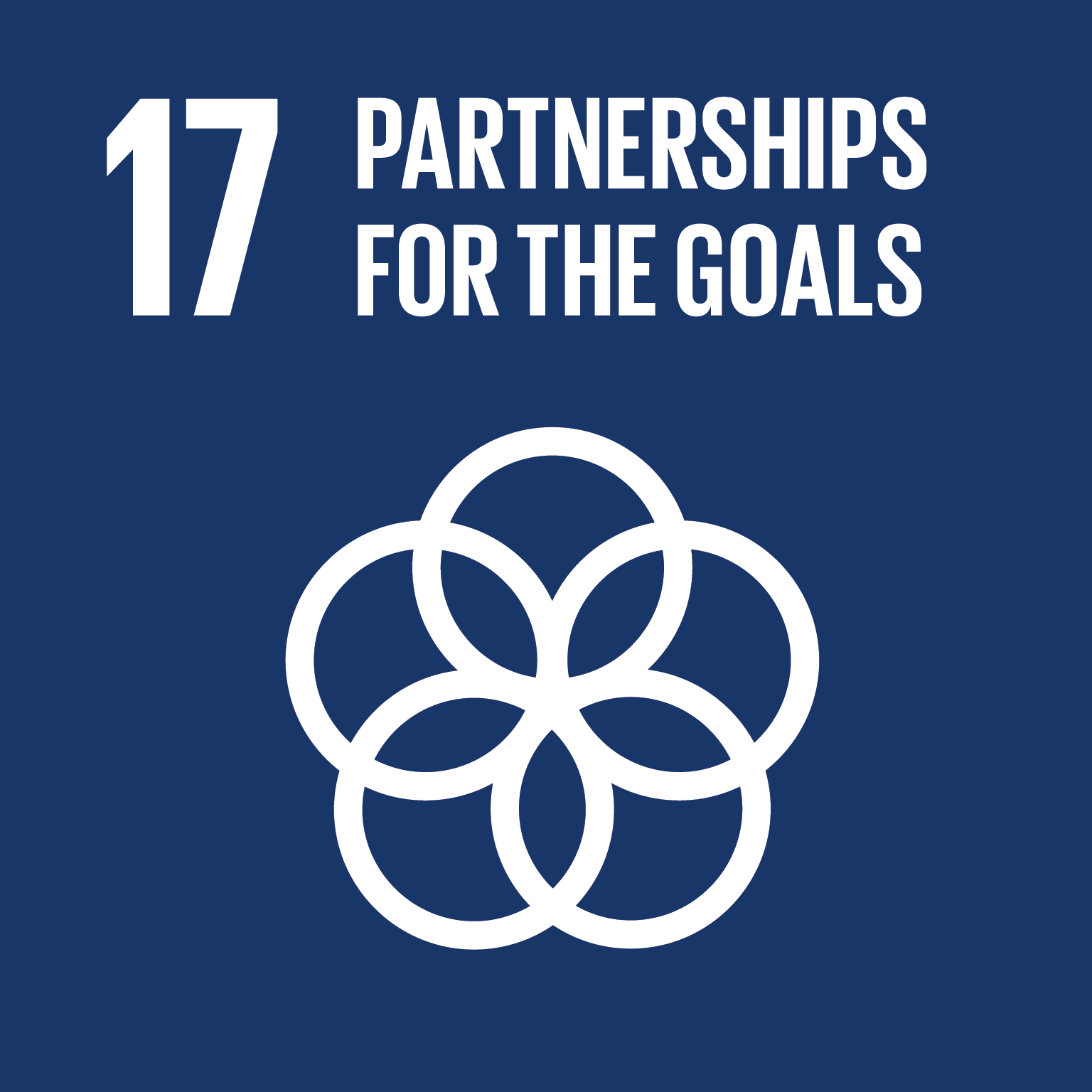Sustainable Development Goals - Overview
G10: Reducing Inequalities
Reduce inequality within and among countries
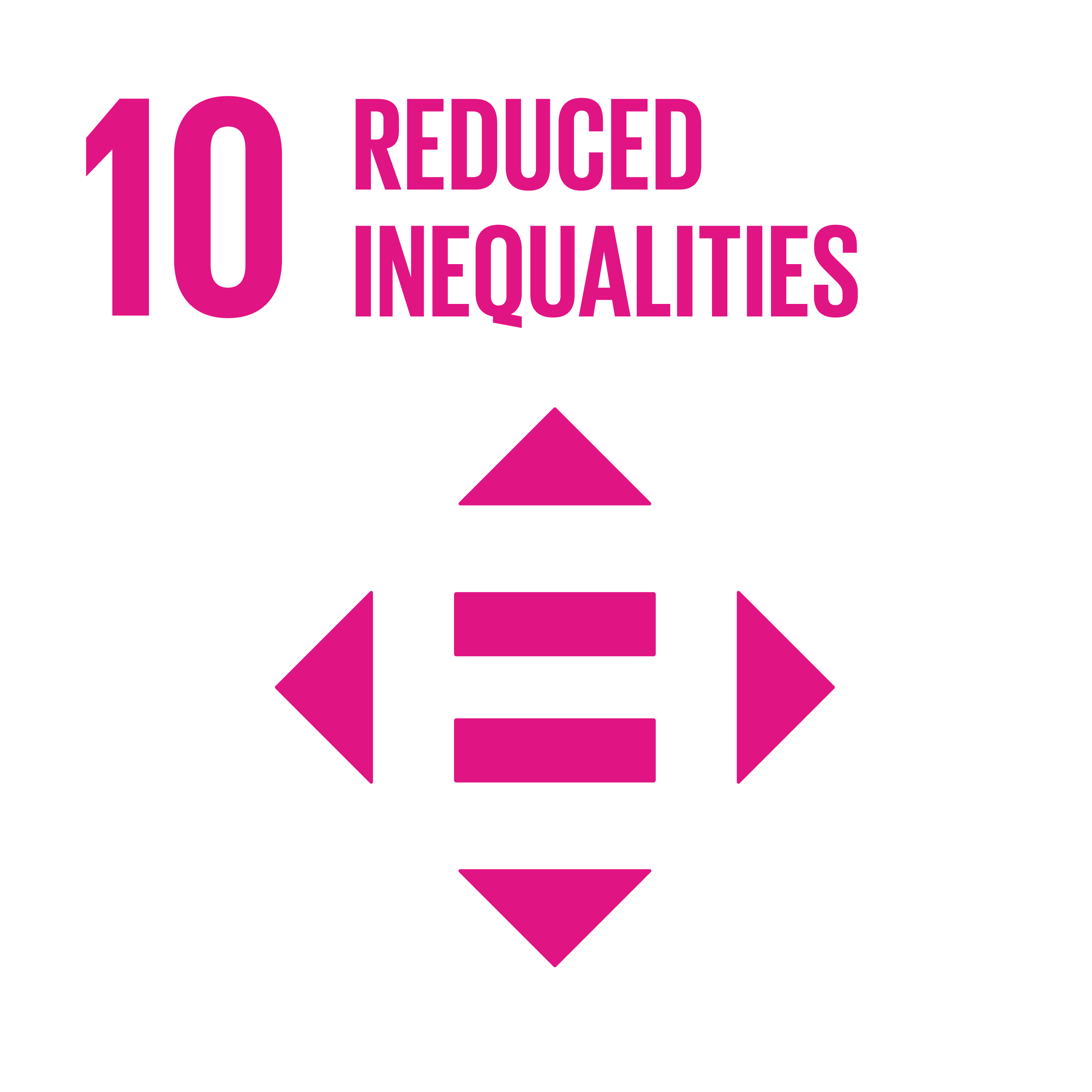
-
Target 10.1: By 2030, progressively achieve and sustain income growth of the bottom 40 per cent of the population at a rate higher than the national average
-
Indicator 10.1.1: Growth rates of household expenditure or income per capita among the bottom 40 per cent of the population and the total population Economic Environmental
-
-
Target 10.2: By 2030, empower and promote the social, economic and political inclusion of all, irrespective of age, sex, disability, race, ethnicity, origin, religion or economic or other status Environmental
-
Indicator 10.2.1: Proportion of people living below 50 per cent of median income, by sex, age and persons with disabilities Economic Environmental
-
-
Target 10.3: Ensure equal opportunity and reduce inequalities of outcome, including by eliminating discriminatory laws, policies and practices and promoting appropriate legislation, policies and action in this regard Governmental
-
Indicator 10.3.1: Proportion of population reporting having personally felt discriminated against or harassed in the previous 12 months on the basis of a ground of discrimination prohibited under international human rights law Environmental Governmental
-
-
Target 10.4: Adopt policies, especially fiscal, wage and social protection policies, and progressively achieve greater equality Environmental
-
Indicator 10.4.1: Labour share of GDP, comprising wages and social protection transfers Economic Environmental Governmental
-
-
Target 10.5: Improve the regulation and monitoring of global financial markets and institutions and strengthen the implementation of such regulations
-
Indicator 10.5.1: Financial Soundness Indicators Economic
-
-
Target 10.6: Ensure enhanced representation and voice for developing countries in decision-making in global international economic and financial institutions in order to deliver more effective, credible, accountable and legitimate institutions Governmental
-
Indicator 10.6.1: Proportion of members and voting rights of developing countries in international organizations
-
-
Target 10.7: Facilitate orderly, safe, regular and responsible migration and mobility of people, including through the implementation of planned and well-managed migration policies Governmental
-
Indicator 10.7.1: Recruitment cost borne by employee as a proportion of yearly income earned in country of destination Economic
-
Indicator 10.7.2: Number of countries that have implemented well-managed migration policies Governmental
-
-
Target 10.a: Implement the principle of special and differential treatment for developing countries, in particular least developed countries, in accordance with World Trade Organization agreements
-
Indicator 10.a.1: Proportion of tariff lines applied to imports from least developed countries and developing countries with zero-tariff
-
-
Target 10.b: Encourage official development assistance and financial flows, including foreign direct investment, to States where the need is greatest, in particular least developed countries, African countries, small island developing States and landlocked developing countries, in accordance with their national plans and programmes
-
Indicator 10.b.1: Total resource flows for development, by recipient and donor countries and type of flow (e.g. official development assistance, foreign direct investment and other flows)
-
-
Target 10.c: By 2030, reduce to less than 3 per cent the transaction costs of migrant remittances and eliminate remittance corridors with costs higher than 5 per cent
-
Indicator 10.c.1: Remittance costs as a proportion of the amount remitted Economic
-
Goals
-
Goal 1.1: Enhance inclusive, equitable and sustainable economic growth.
Strong Aspiration 1. Moonshot 1: Ev -
Goal 1.3: Establish and make functional Continental Financial and Monetary Institutions.
Strong Aspiration 2. Moonshot 2: Af -
Goal 6.1: Increase access to quality, inclusive and relevant education and skills learning system for all citizens.
Strong Aspiration 6. Moonshot 6: Af -
Goal 6.3: Achieve gender parity in all spheres.
Strong Aspiration 6. Moonshot 6: Af -
Goal 6.4: Create a Generation of Engaged and Empowered Youth and Children.
Strong Aspiration 6. Moonshot 6: Af -
Goal 7.1: Strengthen Africa's position and competitiveness in global affairs.
Strong Aspiration 7. Moonshot 7: Af
Targets
-
Target 1.1.1: Increase the 2023 per capita income to at least USD 3,048.
Strong -
Target 1.1.5: Reduce poverty by 20%.
Strong Strong -
Target 1.1.6: Reduce inequality by 15%.
Strong Strong Strong -
Target 1.1.7: Reduce the proportion of the population who suffer from hunger to at-most 5%.
Strong -
Target 1.1.10: Households’ access to electricity is increased to 80%.
Strong -
Target 1.1.11: The proportion of population with access to safe drinking water is increased to 95%.
Strong -
Target 1.1.12: The proportion of population with access to improved sanitation facilities is increased to 80%.
Strong -
Target 1.4.1: Increase growth in agricultural yields by at least 4% per year.
Weak -
Target 1.5.1: The potential of the fisheries and aquaculture within the blue economy space is fully unlocked through targeted interventions.
Weak -
Target 1.3.2: All 4 AU financial institutions are operationalised.
Weak -
Target 6.1.1: Increase net enrolment rates for primary and secondary school to 100% and 80% respectively.
Strong -
Target 6.1.2: At least 80% of children complete primary education with minimum required proficiency levels in reading, writing, mathematics, and digital skills.
Strong -
Target 6.1.3: At least 80% of children below five complete at least two years of structured early childhood education and development (ECD) programme before primary education.
Strong -
Target 6.2.1: Increase access to quality primary healthcare services to at least 40%.
Strong -
Target 6.3.1: Increase coverage of social protection systems by 30% and provide social protection schemes to at least 50% of the population living below the poverty line.
Strong Strong -
Target 6.3.4: All women have rights to own and inherit property, sign contracts, manage business, own a bank account and own land.
Strong Strong -
Target 6.3.5: At least 50% of all elected officials at local, regional, and national levels are women.
Strong Strong -
Target 6.3.6: At least 50% and 30% of management positions in government and private sector, respectively, are held by women.
Strong Strong -
Target 6.3.7: End all forms of discrimination and violence against women and girls.
Strong -
Target 6.3.8: End harmful social norms and customary practices against women and girls, such as child marriages and Female Genital Mutilation (FGM).
Strong -
Target 6.4.1: Reduce youth unemployment rate to 14%.
Strong -
Target 6.4.2: Increase the proportion of youth-owned business by 10%.
Strong Strong -
Target 6.4.3: At least 15% of all elected officials at local, regional, and national levels are youths.
Strong Strong -
Target 7.1.1: Member States’ engagements on global issues are based on Africa’s common position.
Strong -
Target 7.1.3: Africa secures a permanent seat in the UN Security Council.
Strong -
Target 7.1.4: The number of Africans in leadership positions in international organisations is increased.
Strong
Indicators
-
Indicator 1: Real GDP per Capita.
Strong -
Indicator 3: Percentage of population living below the national poverty line.
Strong -
Indicator 4: Gini-coefficient.
Strong -
Indicator 23: Number of financial and monetary institutions and mechanisms established.
Weak -
Indicator 72: Percentage of reported cases of violence against women and girls that have been prosecuted.
Weak -
Indicator 83: Proportion of global issues in which Africa has developed common positions.
Weak -
Indicator 85: Africa secures a permanent seat(s) in the UNSC.
Strong -
Indicator 86: Percentage of international Organizations headed by Africans.
Strong
Goals
-
Goal 1: Investing in people in least developed countries: eradicating poverty and building capacity to leave no one behind.
Weak Universal soci Achieving univ Achieving gend Population and Investing in y Water, sanitat Urbanization a Migration and Good and effec Building and s
Targets
-
Target 1.01.01: Achieve a sustainable increase in coverage of nationally appropriate comprehensive and universal social protection systems and measures, including floors, for all in LDCs..
Strong -
Target 1.03.01: Achieve women’s full, equal and meaningful participation and equal opportunities for leadership at all levels of decision-making in political, economic and public life..
Weak -
Target 1.08.01: Facilitate the orderly, safe, regular and responsible migration and mobility of people, including through the implementation of planned and well-managed migration policies..
Strong -
Target 4.03.01: Increase least developed countries’ exports of services by fully implementing the WTO ministerial decision on the operationalization of the waiver concerning preferential treatment to services and service suppliers of the least developed countries and encourage members that have not yet notified their preferences under the least developed countries services waiver, to also do the same..
Strong -
Target 4.07.01: Fully implement the Agreement on Trade Facilitation and provide assistance in and support for capacity-building of least developed countries in this regard, in accordance with development cooperation effectiveness principles..
Weak -
Target 6.02.01: Ensure the fulfilment of respective ODA commitments to least developed countries..
Strong -
Target 6.03.01: Adopt and implement investment promotion regimes for the least developed countries..
Strong -
Target 6.05.01: By 2030, reduce to less than 3 per cent the transaction costs of migrants’ remittances. In addition, eliminate remittance corridors with costs higher than 5 per cent..
Strong
Indicators
-
Indicator 1.08.01.01: Recruitment cost borne by employees as a proportion of monthly income earned in country of destination.
Strong -
Indicator 1.08.01.02: Proportion of countries with migration policies that facilitate orderly, safe, regular and responsible migration and mobility of people.
Strong -
Indicator 1.09.02.01: Proportion of members and voting rights of developing countries in international organizations.
Strong -
Indicator 3.05.01.01: Domestic credit to private sector (% of GDP).
Weak -
Indicator 4.07.01.01: Proportion of tariff lines applied to imports from least developed countries and developing countries with zero-tariff.
Strong -
Indicator 6.05.01.01: Remittance costs as a proportion of the amount remitted.
Strong
Goals
-
Goal 4: Enhancing adaptive capacity, strengthening resilience and reducing vulnerability to climate change and disasters.
Weak -
Goal 5: Means of implementation.
Weak
Targets
-
Target 1.01.01: Increase labour productivity and decent employment opportunities across all productive sectors of the landlocked developing countries, including manufacturing, services and agriculture, with a particular focus on women and youth, by 50 per cent by 2034..
Strong Strong Strong -
Target 1.01.04: Ensure increased access to inclusive, equitable and quality education, training and skills development, including science, technology, engineering and mathematics education, with a particular focus on bridging the digital divides, including the gender digital divide..
Strong Strong -
Target 1.02.02: Broaden and diversify the entrepreneurial base of landlocked developing countries to better include women and the youth and accelerate their inclusive development, including through targeted technical support..
Strong Strong -
Target 1.02.05: Expand support for policy formulation and international tax cooperation in landlocked developing countries..
Weak -
Target 2.01.04: Address non‑tariff measures and reduce or eliminate arbitrary or unjustified non‑tariff barriers, that is, those that are not in conformity with the rules of the World Trade Organization..
Strong -
Target 2.01.05: Be transparent in taking sanitary and phytosanitary measures on goods in transit in accordance with World Trade Organization rules..
Strong -
Target 2.01.06: Offer appropriate technical assistance and capacity-building to landlocked developing countries to complete the process of their accession to the World Trade Organization, fulfil their commitments and integrate into the multilateral trading system..
Strong Strong -
Target 2.01.07: Take note of landlocked developing countries’ ambition to establish a work programme under the World Trade Organization..
Strong Strong -
Target 5.01.02: Enhance international cooperation for the recovery of stolen assets and their return to their countries of origin, in accordance with the United Nations Convention against Corruption and other applicable instruments..
Weak -
Target 5.02.01: Substantially increase the volume of development finance in support of landlocked developing countries through traditional and innovative sources of finance..
Strong -
Target 5.03.01: Substantially increase foreign direct investment flows to the landlocked developing countries..
Strong -
Target 5.04.01: By 2030, reduce to less than 3 per cent the transaction costs of migrants’ remittances..
Strong
Indicators
- No alignments!

